-
 Bitcoin
Bitcoin $84,912.1002
0.22% -
 Ethereum
Ethereum $1,597.4099
0.99% -
 Tether USDt
Tether USDt $1.0000
0.00% -
 XRP
XRP $2.0848
1.56% -
 BNB
BNB $592.5467
0.52% -
 Solana
Solana $138.6661
3.38% -
 USDC
USDC $1.0000
0.02% -
 Dogecoin
Dogecoin $0.1597
3.32% -
 TRON
TRON $0.2416
-1.86% -
 Cardano
Cardano $0.6327
3.32% -
 UNUS SED LEO
UNUS SED LEO $9.2836
0.56% -
 Chainlink
Chainlink $12.7262
1.41% -
 Avalanche
Avalanche $19.2768
1.31% -
 Stellar
Stellar $0.2442
1.08% -
 Toncoin
Toncoin $2.9950
1.32% -
 Shiba Inu
Shiba Inu $0.0...01231
4.65% -
 Hedera
Hedera $0.1668
2.11% -
 Sui
Sui $2.1474
1.41% -
 Bitcoin Cash
Bitcoin Cash $337.5269
2.68% -
 Hyperliquid
Hyperliquid $17.5726
3.68% -
 Polkadot
Polkadot $3.7336
2.05% -
 Litecoin
Litecoin $76.5245
1.70% -
 Dai
Dai $1.0001
0.02% -
 Bitget Token
Bitget Token $4.4585
2.30% -
 Ethena USDe
Ethena USDe $0.9993
0.01% -
 Pi
Pi $0.6558
7.05% -
 Monero
Monero $214.1926
-0.69% -
 Uniswap
Uniswap $5.2567
1.90% -
 Pepe
Pepe $0.0...07325
4.28% -
 OKB
OKB $50.6926
1.82%
What is Layer 2 solution? How does it help blockchain expansion?
Layer-2 solutions enhance blockchain scalability by processing transactions off-chain, reducing fees and increasing speed. Various types exist, each with trade-offs in security and complexity, offering diverse options for improving blockchain efficiency.
Mar 10, 2025 at 04:25 pm
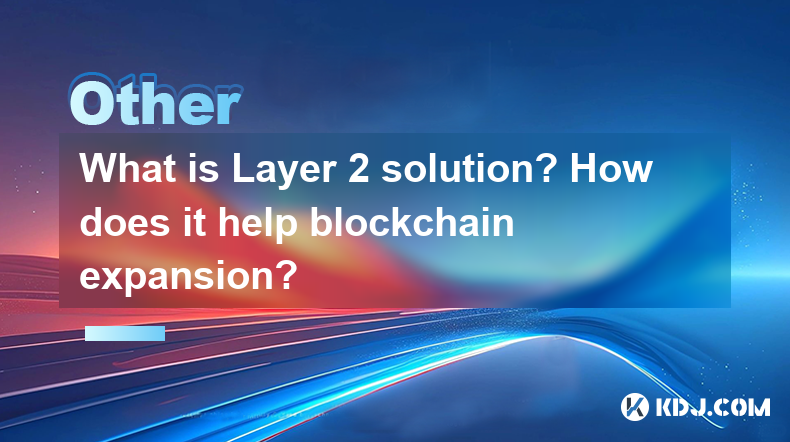
Key Points:
- Layer-2 solutions are technologies built on top of a base blockchain (Layer 1) to improve scalability and transaction speed.
- They achieve this by processing transactions off-chain, reducing the load on the main blockchain.
- Various Layer-2 solutions exist, each with its own mechanisms and trade-offs.
- Understanding the different types and their functionalities is crucial for navigating the evolving crypto landscape.
What is a Layer 2 Solution?
Layer-2 solutions are secondary frameworks built on top of existing blockchains (Layer 1). They aim to address the scalability limitations of Layer-1 blockchains, such as slow transaction speeds and high fees. By processing transactions off-chain, Layer-2 solutions alleviate the burden on the main blockchain, allowing for faster and cheaper transactions. This allows the underlying Layer 1 to focus on security and finality.
How Layer 2 Solutions Help Blockchain Expansion
The primary benefit of Layer-2 solutions is increased scalability. Blockchains have a limited transaction throughput due to their inherent design. Layer-2 solutions circumvent this by processing numerous transactions off-chain before submitting a summarized record back to the main chain. This significantly increases the number of transactions the blockchain can handle.
Another key advantage is reduced transaction fees. Because transactions are processed off-chain, the fees associated with each transaction are significantly lower than on the main chain. This makes the blockchain more accessible to a wider range of users, particularly those with smaller transaction amounts.
Types of Layer 2 Solutions
Several types of Layer-2 solutions exist, each with its own approach to scaling:
- State Channels: These establish a direct communication channel between two or more participants, allowing for multiple transactions to occur off-chain before being settled on the main chain. This is efficient for frequent interactions between the same parties.
- Rollups: These bundle multiple transactions together into a single transaction, which is then submitted to the main chain. This reduces the number of individual transactions processed on Layer 1, improving efficiency. There are two main types: Optimistic Rollups and ZK-Rollups.
- Plasma: This creates a child blockchain that runs alongside the main blockchain. Transactions are processed on the child chain and only a summary of the transactions is sent to the main chain. This offers a higher degree of scalability but introduces complexities in security and data availability.
- Sidechains: These are independent blockchains that run parallel to the main chain. They are connected to the main chain through a two-way peg, allowing for the transfer of assets between the two chains. This provides scalability but also requires trust in the sidechain's security mechanisms.
Optimistic Rollups in Detail
Optimistic Rollups assume transactions are valid unless proven otherwise. They rely on a fraud-proof mechanism where participants can challenge invalid transactions. This approach offers a balance between scalability and security. The validity of a transaction is only verified upon challenge. This results in faster transaction processing, but potentially delayed finality in case of disputes.
ZK-Rollups in Detail
Zero-Knowledge Rollups (ZK-Rollups) use cryptographic proofs to verify the validity of transactions without revealing the transaction details. This provides strong security guarantees and faster finality compared to Optimistic Rollups, although they are generally more complex to implement. The main advantage is the immediate finality.
State Channels Explained Further
State channels are ideal for frequent, recurring transactions between the same parties. They open a channel, conduct multiple transactions within it, and settle only the net result on the main chain. This minimizes on-chain activity and drastically reduces gas fees. However, they require participants to be online and actively engaged.
The Role of Data Availability
A critical aspect of Layer-2 solutions is data availability. Ensuring all transaction data remains accessible to all participants is essential for maintaining the security and integrity of the system. Different Layer-2 solutions employ different mechanisms to ensure data availability.
Security Considerations in Layer 2 Solutions
While Layer-2 solutions enhance scalability, they also introduce new security considerations. The security of a Layer-2 solution depends on the underlying Layer-1 blockchain and the specific mechanisms used in the Layer-2 solution itself. Careful consideration must be given to the security implications of each approach.
Common Questions and Answers:
Q: Are Layer-2 solutions secure? A: The security of a Layer-2 solution is dependent on the security of the underlying Layer-1 blockchain and the specific design of the Layer-2 protocol. Different Layer-2 solutions offer varying levels of security.
Q: How do Layer-2 solutions improve transaction speed? A: By processing transactions off-chain, Layer-2 solutions reduce the load on the main blockchain, leading to faster transaction confirmation times.
Q: What are the trade-offs between different Layer-2 solutions? A: Different Layer-2 solutions have trade-offs between scalability, security, complexity, and transaction finality. Some solutions offer higher scalability at the cost of increased complexity, while others prioritize security over speed.
Q: Which Layer-2 solution is the best? A: There is no single "best" Layer-2 solution. The optimal choice depends on the specific needs and priorities of the application or blockchain. Factors to consider include scalability requirements, security needs, and the level of technical complexity acceptable.
Q: How do I use Layer-2 solutions? A: The process of using a Layer-2 solution varies depending on the specific solution. Generally, it involves interacting with a Layer-2 compatible wallet or application. Specific instructions will be provided by the respective Layer-2 platform.
Disclaimer:info@kdj.com
The information provided is not trading advice. kdj.com does not assume any responsibility for any investments made based on the information provided in this article. Cryptocurrencies are highly volatile and it is highly recommended that you invest with caution after thorough research!
If you believe that the content used on this website infringes your copyright, please contact us immediately (info@kdj.com) and we will delete it promptly.
- Ethena Labs Unveils Converge, a New Layer-1 Blockchain Targeting Tokenized Real-World Assets
- 2025-04-19 12:20:14
- FBI Releases Five Warnings to Help Protect Investors in the Cryptocurrency Space
- 2025-04-19 12:20:14
- Today, the Official Trump ($TRUMP) meme coin tokens have been unlocked, sparking panic among investors.
- 2025-04-19 12:15:14
- Dogecoin (DOGE) Price Prediction: Will the Original Memecoin Reach $1 by Late Summer 2025?
- 2025-04-19 12:15:14
- Resilience is a Distinct Attribute of Solana
- 2025-04-19 12:10:13
- Astar Network Adjusts Its Token Issuance Model to Stabilize APY and Reduce Inflation
- 2025-04-19 12:10:13
Related knowledge
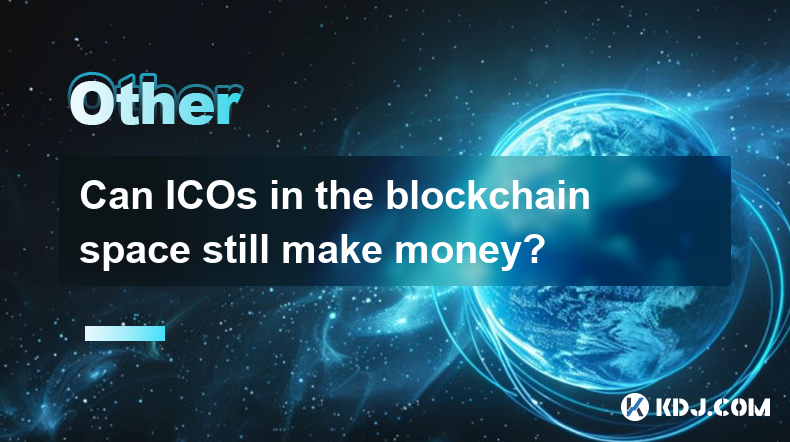
Can ICOs in the blockchain space still make money?
Apr 17,2025 at 08:29pm
The landscape of Initial Coin Offerings (ICOs) in the blockchain space has evolved significantly since their peak in 2017 and 2018. Despite the increased regulatory scrutiny and the rise of alternative fundraising methods like Security Token Offerings (STOs) and Initial Exchange Offerings (IEOs), ICOs can still be a viable way to raise funds and generat...

Can the application of blockchain in supply chain finance bring benefits?
Apr 15,2025 at 04:00pm
Can the application of blockchain in supply chain finance bring benefits? The integration of blockchain technology into supply chain finance has garnered significant attention in the cryptocurrency and financial sectors. This article explores how blockchain can potentially revolutionize supply chain finance, detailing its benefits and providing a compre...
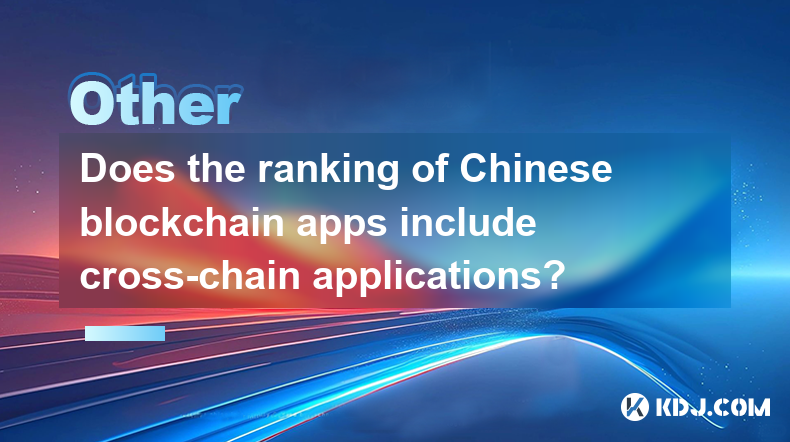
Does the ranking of Chinese blockchain apps include cross-chain applications?
Apr 14,2025 at 04:00pm
The ranking of Chinese blockchain apps is a comprehensive evaluation that takes into account various aspects such as user base, transaction volume, and technological innovation. A pertinent question arises regarding whether these rankings include cross-chain applications. Cross-chain applications, which allow different blockchain networks to interact an...
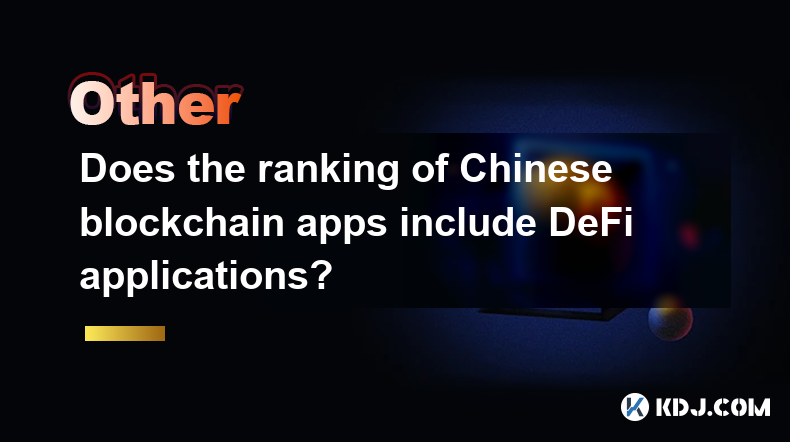
Does the ranking of Chinese blockchain apps include DeFi applications?
Apr 15,2025 at 06:57am
The ranking of Chinese blockchain apps is a comprehensive list that showcases the most popular and influential applications within the cryptocurrency ecosystem. One question that often arises is whether these rankings include DeFi applications. To answer this, we need to delve into the specifics of how these rankings are compiled and what types of appli...
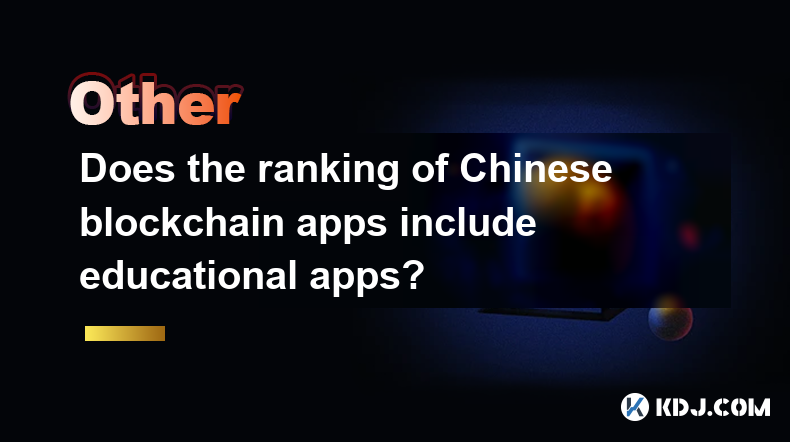
Does the ranking of Chinese blockchain apps include educational apps?
Apr 16,2025 at 03:35am
The ranking of Chinese blockchain apps often includes a variety of categories, from finance and gaming to social networking and beyond. One question that frequently arises is whether these rankings include educational apps. To address this, we need to delve into the specifics of how blockchain apps are categorized and ranked in China, and whether educat...
Does the ranking of Chinese blockchain apps include enterprise-level applications?
Apr 15,2025 at 06:42am
The ranking of Chinese blockchain apps often includes a variety of applications, ranging from consumer-focused to enterprise-level solutions. Understanding the scope and criteria for these rankings is essential to determine if enterprise-level applications are included. This article delves into the specifics of how Chinese blockchain app rankings are co...

Can ICOs in the blockchain space still make money?
Apr 17,2025 at 08:29pm
The landscape of Initial Coin Offerings (ICOs) in the blockchain space has evolved significantly since their peak in 2017 and 2018. Despite the increased regulatory scrutiny and the rise of alternative fundraising methods like Security Token Offerings (STOs) and Initial Exchange Offerings (IEOs), ICOs can still be a viable way to raise funds and generat...

Can the application of blockchain in supply chain finance bring benefits?
Apr 15,2025 at 04:00pm
Can the application of blockchain in supply chain finance bring benefits? The integration of blockchain technology into supply chain finance has garnered significant attention in the cryptocurrency and financial sectors. This article explores how blockchain can potentially revolutionize supply chain finance, detailing its benefits and providing a compre...

Does the ranking of Chinese blockchain apps include cross-chain applications?
Apr 14,2025 at 04:00pm
The ranking of Chinese blockchain apps is a comprehensive evaluation that takes into account various aspects such as user base, transaction volume, and technological innovation. A pertinent question arises regarding whether these rankings include cross-chain applications. Cross-chain applications, which allow different blockchain networks to interact an...

Does the ranking of Chinese blockchain apps include DeFi applications?
Apr 15,2025 at 06:57am
The ranking of Chinese blockchain apps is a comprehensive list that showcases the most popular and influential applications within the cryptocurrency ecosystem. One question that often arises is whether these rankings include DeFi applications. To answer this, we need to delve into the specifics of how these rankings are compiled and what types of appli...

Does the ranking of Chinese blockchain apps include educational apps?
Apr 16,2025 at 03:35am
The ranking of Chinese blockchain apps often includes a variety of categories, from finance and gaming to social networking and beyond. One question that frequently arises is whether these rankings include educational apps. To address this, we need to delve into the specifics of how blockchain apps are categorized and ranked in China, and whether educat...

Does the ranking of Chinese blockchain apps include enterprise-level applications?
Apr 15,2025 at 06:42am
The ranking of Chinese blockchain apps often includes a variety of applications, ranging from consumer-focused to enterprise-level solutions. Understanding the scope and criteria for these rankings is essential to determine if enterprise-level applications are included. This article delves into the specifics of how Chinese blockchain app rankings are co...
See all articles























































































